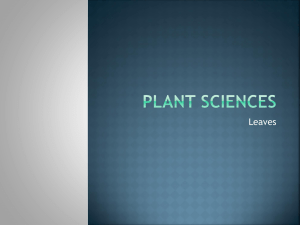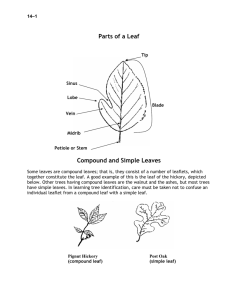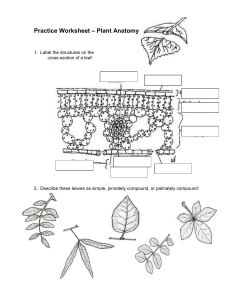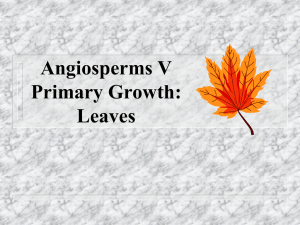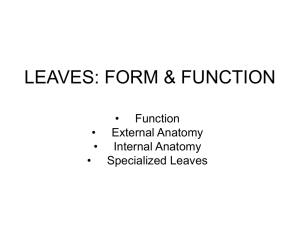doc format
advertisement
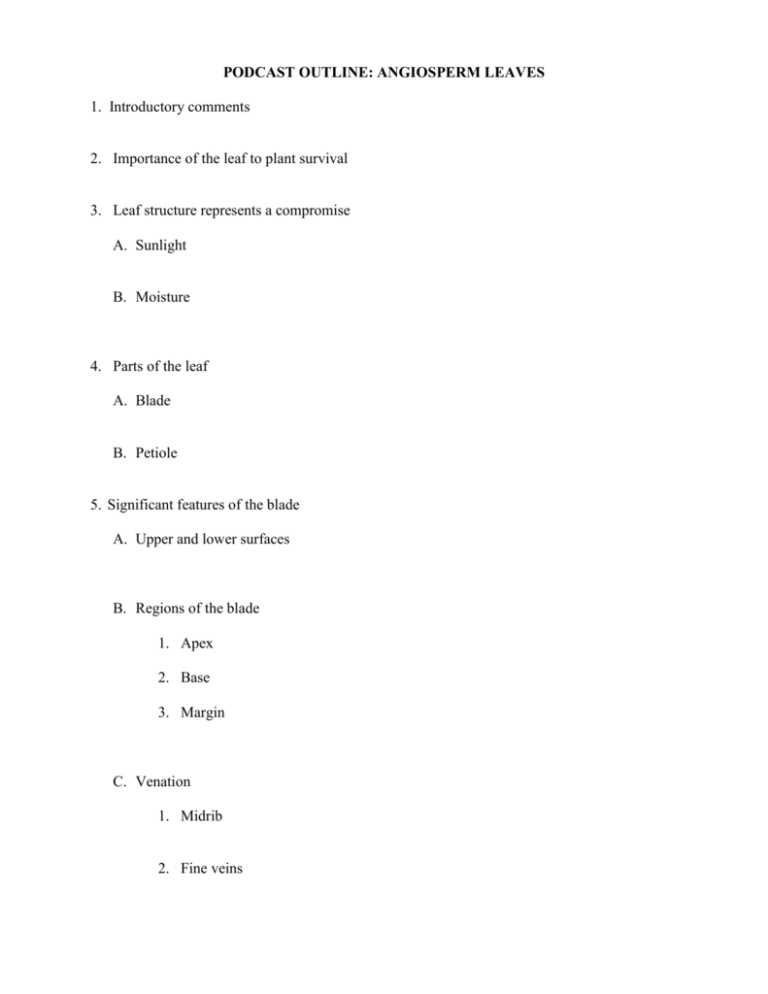
PODCAST OUTLINE: ANGIOSPERM LEAVES 1. Introductory comments 2. Importance of the leaf to plant survival 3. Leaf structure represents a compromise A. Sunlight B. Moisture 4. Parts of the leaf A. Blade B. Petiole 5. Significant features of the blade A. Upper and lower surfaces B. Regions of the blade 1. Apex 2. Base 3. Margin C. Venation 1. Midrib 2. Fine veins 6. Simple vs compound leaves A. Simple leaves B. Compound leaves 1. Pinnately compound 2. Palmately compound 3. Trifoliate C. Specialized leaves 1. Spines 2. Succulence 3. Reproduction 4. Carnivorous leaves 7. Leaf anatomy A. Dermal tissue B. Ground tissue 1. Palisade parenchyma QuickTime™ and a TIFF (Uncompressed) decompressor are needed to see this picture. 2. Spongy mesophyll C. Vascular tissue http://upload.wikimedia.org/wikipedia/commons/thumb/1/13/Leaf_ anatomy_universal.png/800px-Leaf_anatomy_universal.png 8. Surface: volume ratio Questions Explain how leaves process atmospheric gasses and water to ensure their plant’s survival. How is leaf structure a compromise between various environmental factors? What are the key features of a leaf blade that vary from species to species? Explain the difference between simple, pinnately compound, palmately compound, and trifoliate leaves. List and describe three types of specialized leaves. How is each specialization adaptive? Describe the anatomical features of a typical leaf. Include dermal, ground, and vascular tissues. How does the surface: volume ratio of angiosperm leaves compare to that of conifer leaves? How is that difference adaptive to each type of plant?
